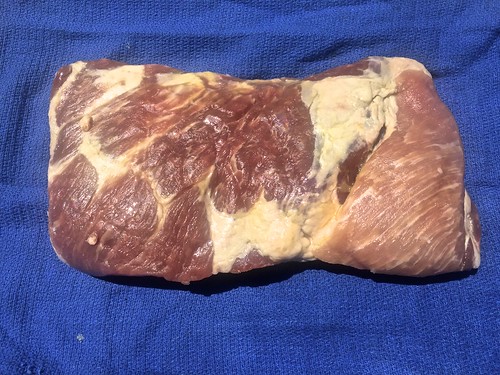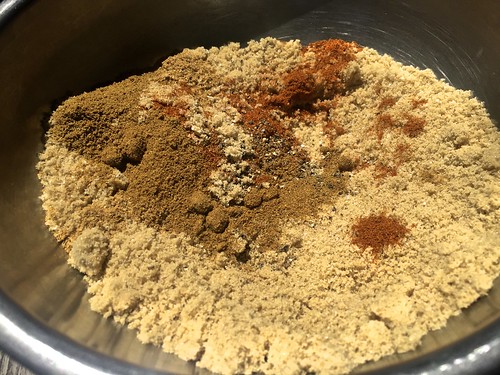Moroccan pickled veggies
In Morocco at a cooking class in Marrakech at La Maison Arabe, Amaggie Wafa and Ayada Benijei taught us to make Berber bread, couscous with chicken and vegetables, chicken tagine with preserved lemons and clarified butter, tomato marmalade, eggplant-tomato salad and preserved vegetables. The cooking class lasted four hours. The time it took to show us how to make preserved or pickled vegetables: five minutes.
To Wafa and Benijei, the process was so easy, there were no pickle recipes. A little of this, a little of that, throw the vegetables into a jar, shake it up, put it in a cupboard and in a week, voila, you have pickles.
Pickle recipes tip from Grandma
From my grandmother I learned that making kosher dill pickles was a little more complicated. In retrospect, I think that’s because pickling cukes are more prone to decay than are the carrots, parsnip, fennel and green beans used in Morocco.
Every Thanksgiving I make both.
Pickles are very personal. What one person loves might be too salty or vinegary to another. It may take you several tries before you settle on the mix of salt, vinegar and spices that suits your palate.
Garlic is usually added to brine. My grandmother didn't put garlic in hers and I don't put any in mine so I indicated garlic as optional.
Lower East Side Kosher Dill Pickles
When making kosher dill pickles keep in mind four very important steps:
1. Select pickling cukes, not salad cucumbers, and pick ones without blemishes or soft spots.
2. Taste the brine to confirm you like the balance of salt-to-vinegar. The flavor of the brine will approximate the flavor of the pickles.
3. Once the cukes are in the brine, they must be kept submerged in an open container.
4. When the pickles have achieved the degree of pickling you like, which could take three days to a week, store the pickles in the brine, seal and keep in a refrigerator where they will last for several weeks.
Ingredients
8 cups water
¼ cup kosher salt
1 cup white wine vinegar or yellow Iranian vinegar (my preference)
4 garlic cloves, skin removed, root end trimmed off, cut into thin strips (optional)
5 dried bay leaves
10 whole black peppercorns
10 whole mustard seeds
¼ teaspoon pepper flakes or 1 dried Sichuan pepper, split open
5 sprigs of fresh dill
5 pounds small pickling cucumbers, washed, stems removed, dried
Directions
1. In a non-reactive pot, heat the water and vinegar on a medium flame. When the water gently simmers, add the salt and stir to dissolve. Do not allow the water to boil.
2. Dip your finger in the brine, taste and adjust the flavor with a bit more salt, water or vinegar.
3. Place the garlic and spices in the bottom of a gallon glass or plastic container. Arrange the cucumbers inside.
4. Pour in the hot brine being careful to cover the cucumbers. Reserve 1 cup of brine.
5. To keep the cucumbers submerged in the brine, find a plastic cup that is not as wide as the mouth of the container. Place the reserved cup of brine into the plastic cup and put into the container to press down on the cucumbers.
6. Place the container in a dark, cool corner of the kitchen. Check daily to make sure the cucumbers are submerged. If the brine evaporates, use the reserved brine in the plastic cup, replenishing the liquid in the cup with water to weigh down the cukes.
7. After three days, remove one cucumber and sample. If you like your pickles crisp, that may be enough time. If they aren’t pickled enough for you, let them stay on the counter another few days.
8. When you like how they taste, remove the cup and seal the top. Refrigerate the container. Moroccan Style Preserved Vegetables
In Morocco, virtually any vegetable can be preserved. In the class, we were shown green beans, fennel, parsnips and carrots. Experiment and see what you like, including asparagus, zucchini, beets, daikon, eggplant, daikon and broccoli.
For myself, over the years I have settled on onions, carrots, cauliflower florets and green cabbage. Recently I have been making celery hearts because every morning my wife juices a celery stalk to begin her day with a glass of healthy celery juice. That makes me the beneficiary of a great many celery hearts, which I am making into delicious pickles. Whatever you try, prepare the vegetable by washing, peeling and cutting them into pieces similar in size, about a 1/4" except with the celery hearts. I leave the bottom of the hearts so they pickle as a stalk.
The fun thing about pickling is you can personalize your pickles, making them any way you like.
Save the pickling brine. It is delicious poured over warm Japanese rice or mixed with olive oil to make a salad dressing.
Ingredients
2 whole carrots, ends trimmed, washed, peeled, cut into rounds, ¼-inch thick
2 celery hearts, root end trimmed
1 medium yellow onion, washed, root and stem ends removed, peeled, sliced lengthwise (root to stem) 1/4" slices
1 small whole green cabbage, washed, any brown outer leaves removed and discarded, cut in half, cut out core and reserve for soup, cut into 1/4" squares
1 small white cauliflower, washed, leaves removed (instructions below)
4 bay leaves
½ teaspoon black peppercorns
¼ teaspoon pepper flakes or 1 dried Sichuan pepper, split open, roughly chopped
1 teaspoon dried oregano
1 garlic clove, skin removed, root end trimmed off, cut into thin strips (optional)
3 tablespoons kosher salt
1½ cups white wine or yellow Iranian vinegar
2 cups water
1 tablespoon olive oil
Directions
1. Sterilize two quart-sized glass or plastic containers.
2. Finalize the prep on the cauliflower by using a sharp pairing knife to create 1" long florets about 1/4" thick. Use the remaining stems for a stir fry or soup.
3. Toss the vegetables together to mix well in a large bowl.
4. Place the mixed vegetables into the two jars.
5. Add equal amounts of the aromatics to each jar. 6. Combine the kosher salt, water and vinegar. Mix well. Taste. If you find the mixture too acidic, slowly add water until you like the flavor. If not salty enough, add a small amount of kosher salt
7. Pour the water-vinegar mixture into the jars, making sure the liquid covers the vegetables. If more liquid is needed, make more brine and reserve any left over.
8. Top off each jar with equal amounts of olive oil.
9. Seal the jars and shake well to dissolve the salt and mix the aromatics.
10. Refrigerate. Wait one week and taste. Wait longer if they aren’t pickled enough. They will keep in the refrigerator for months.












![[Grilled+Artichokes.jpg]](https://blogger.googleusercontent.com/img/b/R29vZ2xl/AVvXsEgZopiEtZh4PrVby5rPUpuizRpEkAnAPoudeXJx5bl2CSsPy2-ZlkhWLs6Dau6OoE0LyPU64jFcUcm-lH1XonrEakZ3zjZNe-GmLoKxc5fMo0EXZ7WvGMwPgSvt3oiVm8uH7HjrbUXrZCNc/w400-h300/Grilled+Artichokes.jpg)

















